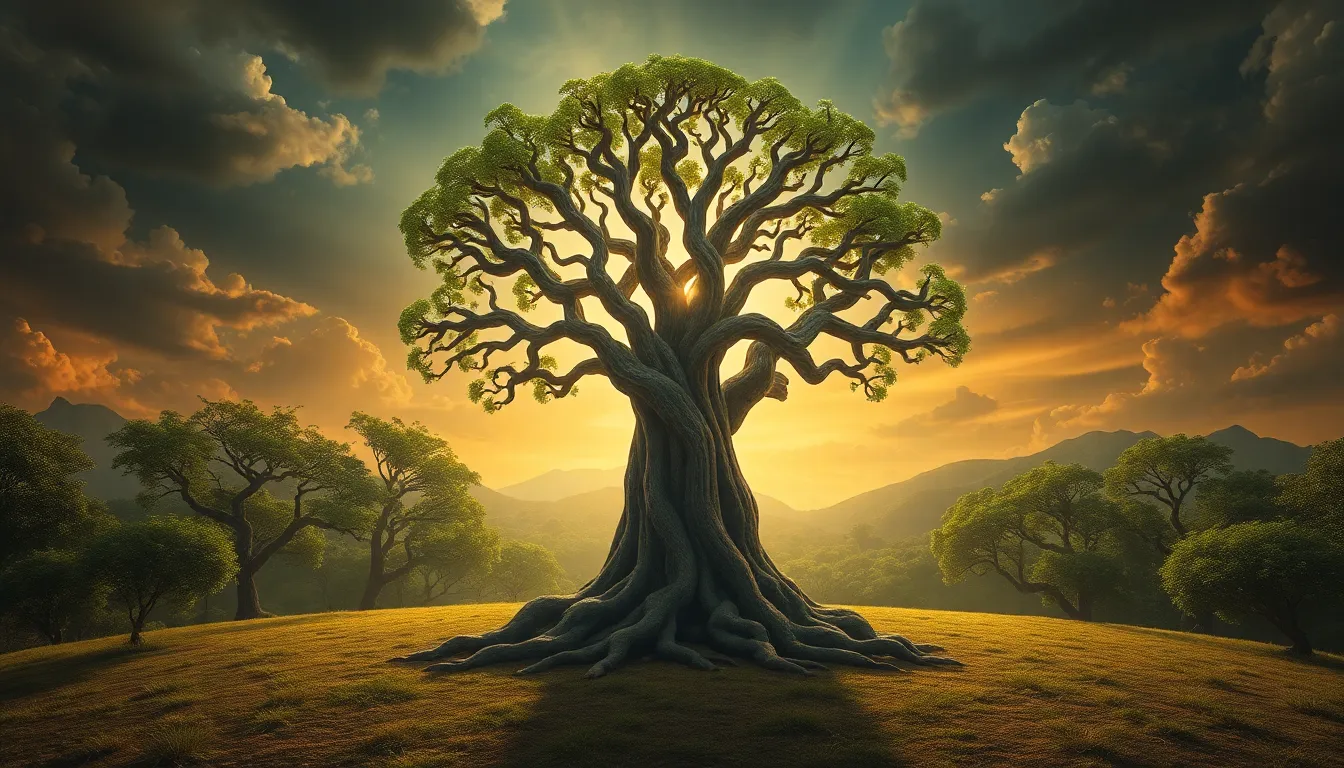The Tree of Life: Unraveling Ancient Myths Across Cultures
1. Introduction to the Tree of Life
The Tree of Life is a powerful symbol that transcends cultures and epochs, embodying concepts of interconnectedness, growth, and renewal. It serves as a metaphor for the complex relationships that exist among various forms of life, as well as an emblem of spiritual enlightenment and wisdom. This article aims to explore the significance of the Tree of Life across different cultures, examining its historical context, religious interpretations, cultural variations, and enduring legacy.
2. Historical Context of the Tree of Life
Throughout history, the Tree of Life has been revered in various ancient civilizations, each interpreting its meaning in unique ways. The symbol often represents the connection between the heavens and the earth, serving as a bridge between the divine and the mortal.
- Mesopotamia: In ancient Mesopotamian cultures, the Tree of Life was associated with the gods and the afterlife, symbolizing eternal life.
- Egypt: The Egyptian tree, often depicted with the goddess Nut arching over it, represented the sky and the cycle of life and death.
- Celts: For the Celts, the Tree of Life was a symbol of growth and the interconnectedness of all living things, often seen in their artwork and mythology.
These interpretations reveal the pivotal role that the Tree of Life has played in mythology and spirituality across different cultures.
3. The Tree of Life in Religious Texts
The Tree of Life is prominently featured in several religious texts, serving various symbolic roles.
Judeo-Christian Traditions
In the Judeo-Christian context, the Tree of Life appears in the Book of Genesis as part of the Garden of Eden. It is often associated with immortality and divine wisdom, contrasting with the Tree of Knowledge of Good and Evil.
Hinduism and Buddhism
In Hinduism, the Tree of Life symbolizes the universe and is often depicted as a sacred fig tree (Peepal tree). It represents the cycle of life, death, and rebirth, reflecting the teachings of karma and dharma.
Buddhism also incorporates the Tree of Life concept, particularly through the Bodhi tree under which Siddhartha Gautama attained enlightenment, symbolizing spiritual awakening and the path to Nirvana.
4. Cultural Variations of the Tree of Life
The interpretations of the Tree of Life differ significantly among indigenous cultures.
Indigenous Cultures: North America and Australia
- In many Native American cultures, the Tree of Life is seen as a source of life and sustenance, representing the unity of all living beings.
- Australian Aboriginal cultures view the Tree of Life as a symbol of connection to ancestors and the earth, integral to their spiritual practices.
African Interpretations
In various African cultures, the Tree of Life is often linked to ancestry and the continuation of life through generations. It serves as a reminder of the importance of family and community ties.
5. The Tree of Life in Art and Literature
The Tree of Life has inspired countless artists and writers, leading to its depiction in various forms of art and literature.
Depictions in Art
- Ancient carvings in temples often depict the Tree of Life as a central motif.
- Modern artists continue to explore the theme, using it to convey messages of unity and environmentalism.
Literary References
In literature, the Tree of Life appears in mythological stories, symbolizing the journey of life, personal growth, and the struggles faced by individuals. Examples can be found in sacred texts, poetry, and contemporary novels.
6. Scientific Perspectives on the Tree of Life
Interestingly, the concept of the Tree of Life also intersects with scientific discourse, particularly in biology.
The Biological Tree of Life
In biology, the Tree of Life represents the evolutionary relationships among various species, illustrating how all living organisms are interconnected through common ancestry.
Influence on Contemporary Discussions
Ancient myths surrounding the Tree of Life continue to influence contemporary scientific discussions about biodiversity and conservation efforts, emphasizing the importance of maintaining ecological balance.
7. Symbolism and Meaning of the Tree of Life
The Tree of Life carries profound symbolism across cultures, often embodying themes such as:
- Growth: The tree’s ability to flourish represents personal and spiritual growth.
- Interconnectedness: It symbolizes the relationships among all forms of life and the environment.
- Renewal: The cyclical nature of trees, shedding leaves and regrowing, symbolizes the cycles of life.
These themes have deep psychological and philosophical interpretations, often reflecting the human experience and our quest for meaning.
8. Modern Adaptations and Representations
In contemporary culture, the Tree of Life has found new life in various forms, from fashion to film.
The Tree of Life in Popular Culture
- Movies like “Avatar” and “The Tree of Life” explore themes of connection and the natural world.
- In fashion, the Tree of Life is often used as a design motif in jewelry and clothing, symbolizing personal growth and spirituality.
Contemporary Spiritual Practices
Many modern spiritual practices have revived the symbolism of the Tree of Life, incorporating it into rituals and meditative practices that emphasize connectedness and harmony with nature.
9. The Tree of Life as a Global Unifier
The Tree of Life serves as a powerful symbol of unity, fostering cross-cultural dialogue and understanding.
Preserving Ancient Myths
By preserving the myths and stories surrounding the Tree of Life, cultures can maintain their heritage while promoting a shared understanding of our interconnected existence in a rapidly changing world.
10. Conclusion: The Enduring Legacy of the Tree of Life
In conclusion, the Tree of Life is more than just a symbol; it encapsulates vital insights about life, growth, and our interconnectedness across cultures. From ancient myths to modern representations, its legacy endures, reminding us of our shared humanity and the importance of nurturing our relationships with each other and the natural world. As we look toward the future, the Tree of Life continues to inspire dialogue, creativity, and spiritual exploration, affirming its relevance in today’s society.


